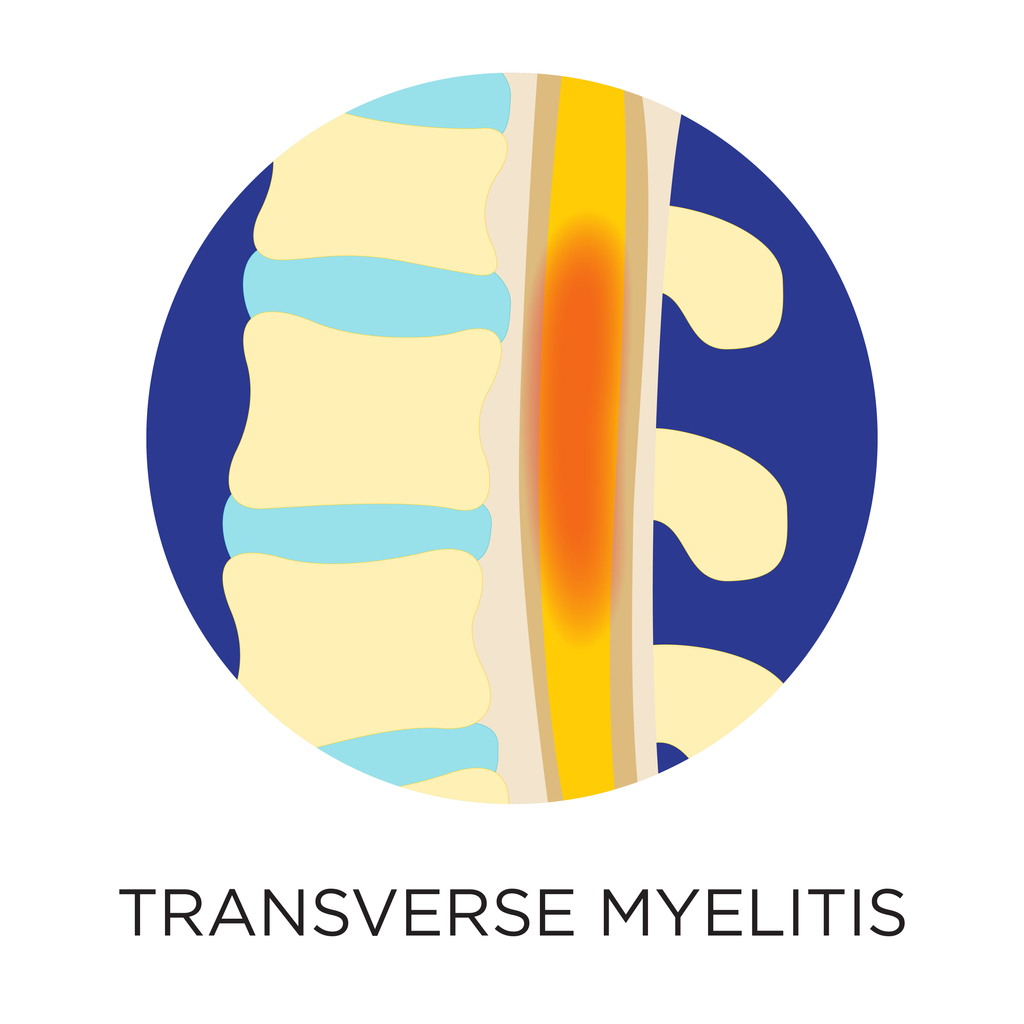Pain
Conventional Medical Treatments for Transverse Myelitis

What is transverse myelitis?
Transverse myelitis is a rare neurological condition that interrupts proper communication from the spinal cord nerves to other areas of the body. It is a result of inflammation that damages the myelin sheath, which is the covering that surrounds nerve cells of the spinal cord. Transverse myelitis can occur in any area along the spine and impacts both sides of the spinal cord.
Conventional medical treatments for transverse myelitis
Transverse myelitis (TM) treatments strongly depend on the cause. The goal of treatment is to reduce inflammation around the spinal cord and relieve symptoms. Conventional medical treatments may include steroids, plasma exchange, immunosuppression, intravenous immunoglobulin, medications, and therapies.
Intravenous steroids
High doses of steroids may be given intravenously to reduce inflammation in the spinal column. This treatment generally lasts for at least three to five days. Continued steroid treatment is dependent upon MRI results at the end of the treatment session.
Plasmapheresis or plasma exchange therapy
For individuals who cannot utilize or do not respond well to intravenous steroids, plasma exchange therapy may be an option. During this treatment, plasma is removed from the blood and replaced with special fluids. This is thought to remove antibodies that are causing inflammation.
Immunosuppression
If intravenous steroids or plasma exchange are not reducing inflammation, immune-based interventions may be needed. This may include cyclophosphamide, a chemotherapy drug. Since this is an aggressive treatment, an experienced oncology team will closely monitor due to possible complications that could occur.
Intravenous immunoglobulin
Intravenous immunoglobulin, or IVIG, involves an injection from healthy donors of antibodies. The healthy antibodies bind to the antibodies that are causing problems to remove them.
Medications
Certain medications may be prescribed to treat the cause of transverse myelitis or to reduce symptoms. They include the following:
- Antiviral medications — Antiviral medications may be prescribed if TM appears to be caused by a virus.
- Medications to treat symptoms — Other medications may be prescribed in order to treat symptoms associated with TM. These medications may include pain medications, medicine to treat bowel or bladder dysfunction, medication to relieve muscle spasms, or antidepressants.
Physical or occupational therapy
Physical therapy can help with strengthening the muscles and regaining balance and coordination. It is also beneficial with learning the safe use of a wheelchair, cane, or other medical devices. Occupational therapy can help individuals with TM regain the ability to complete activities of daily living, such as bathing, dressing, and household chores. It helps with adapting the environment to meet specific needs.
Psychological therapies
Living with TM can be challenging; however, psychotherapy can help individuals learn to cope with the condition. It involves working with a therapist in a supportive environment to improve mental well-being. It can also treat mental issues that may result from TM, such as depression or anxiety.












